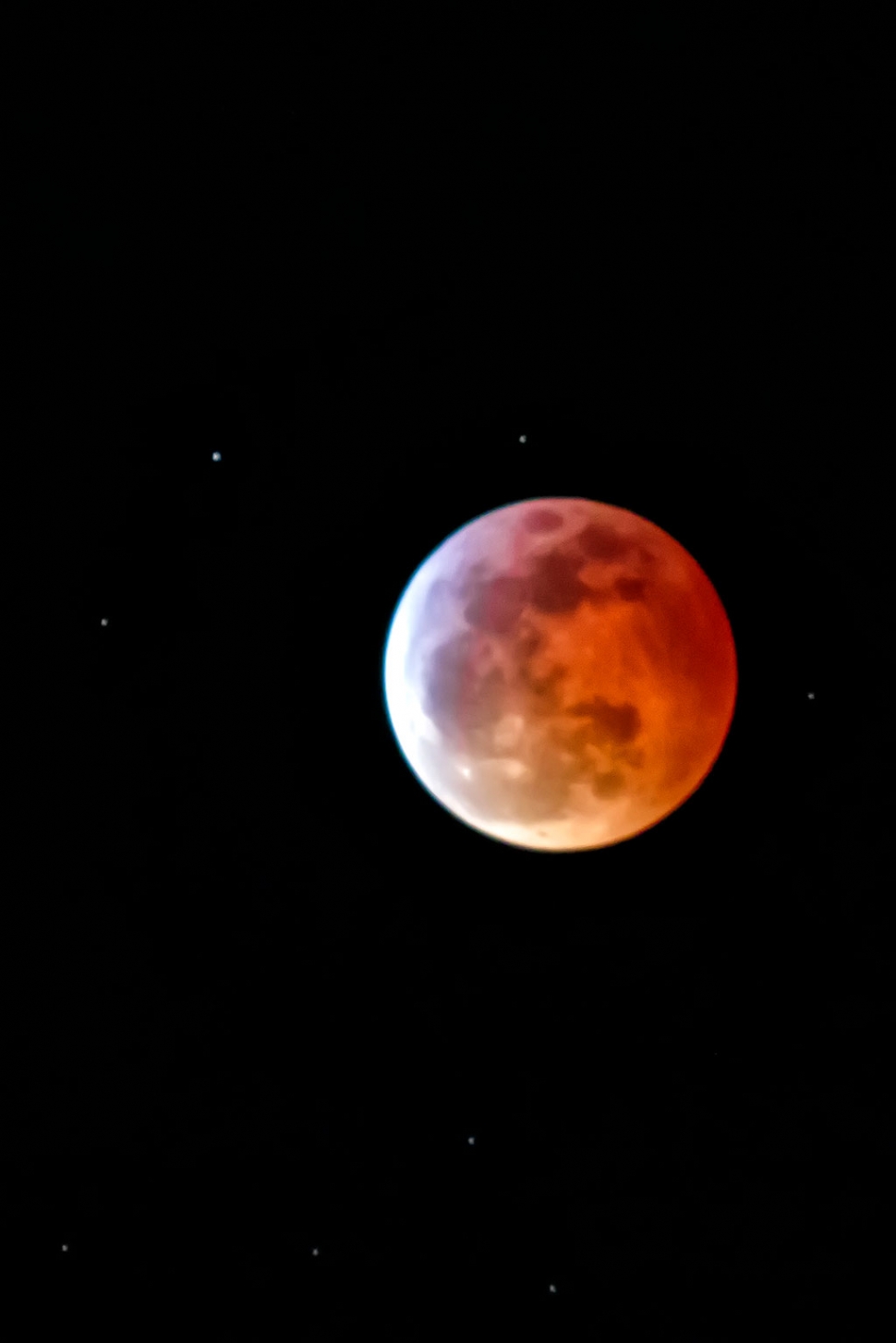|
Focus on Photography
 Photo of the Week "Super Blood Wolf Moon Eclipse" by Bob Crum. Photo data: Canon 7DMKII camera, Tamron 300mm lens with Tamron 1.4X telephoto converter, exposure; ISO 6400, aperture f/11, shutter speed 2 seconds. By Bob Crum — Wednesday, January 23rd, 2019
Resistance was futile
 Bob Crum I was ready! Knowing that the moon will be in constant motion, I installed my camera on a fluid video head on a tripod to facilitate tracking the moon easier than if on a conventional ball head. I was excited as I anticipated the big, bright full moon rising in the eastern sky. The excitement quickly dissipated as I realized that the sky hooks I put up to prevent clouds from obscuring the eclipse weren't working. At 6:30 pm, clouds filled the sky. Depressing but must persevere. I patiently waited, optimistic that the clouds would disappear in time to reveal the grand event. At 7 pm, still cloudy! At 8 pm, still cloudy! Finally, intermittent clouds permitted brief glimpses of the moon. For a while, clouds came and went, dancing in the sky, teasing us by showing glimpses of the lunar eclipse in progress. Alas, about 45 minutes before the full eclipse, the cloud cover cleared revealing the full glory of the moon. Except for seven readers of this column (you know who you are), 2,396,381 of my readers watched in awe. Photographing the eclipse was not without some frustration. I was reminded again that often there are better tools for a given task than those on hand. My gear consisted of a Tamron 300mm lens coupled to a Tamron 1.4X teleconverter mounted on my Canon 7D Mark II camera. I installed the camera on a Manfrotto MHXPro-2W fluid video head mounted on a Manfrotto 290Extra tripod. I also used a cable shutter release. Furthermore, to minimize camera vibration, I enabled mirror lockup in the camera. All the while, I longed for a 6oomm lens. (sigh!) As you might expect, I made a bunch of photos. Afterward, I remained perplexed. What was I thinking? The main feature of the eclipse was the moon going dark in the full shadow of the earth, right? So what's the point of photographing a dark moon in a black sky if you can't see the moon in the photo? Good grief. Furthermore, the darkness will drive ISO higher than the moon which causes maximum digital noise! Regardless, I have an exquisite photo of a dark moon traveling 2,288 miles per hour across a black sky. Instead of the exquisite invisible moon photo, the photo of the week is a bright, colorful moon during the eclipse. Touted as a super blood wolf moon, a photo showing some color makes more sense. Not sure how the photo will appear in the newspaper in black & white, but look closely and hopefully you'll see little white dots: Stars! I love serendipity! How many stars do you count? Did you find eight? See the photo in color at fillmoregazette.com. But first, look again. In the moon's upper right quadrant see the never before photographed moonworkers making scrumptious lunar green cheese and, of course, astronomically smoooth moonshine! Both remain tariff-free so buy some soon! Though I enjoyed the super blood wolf moon eclipse experience, I can't say that I was thrilled. In my opinion, it didn't seem to match the hyperbole. Sure, seeing the change from a bright, white moon to a reddish/orange orb and then go dark in the earth's shadow was interesting but not exciting. Thrilling would be watching the infamous cow chase a wolf over the blood moon. Maybe next year! Please take a minute and email me your thoughts about your super blood wolf moon eclipse experience. Was it anticlimactic or were you thrilled? BTW, there are many reports about hearing loud serendipitous howling. Well, ahem, did you really think that I could resist? Send comments, questions or suggestions to: focusonphotography@earthlink.net |
